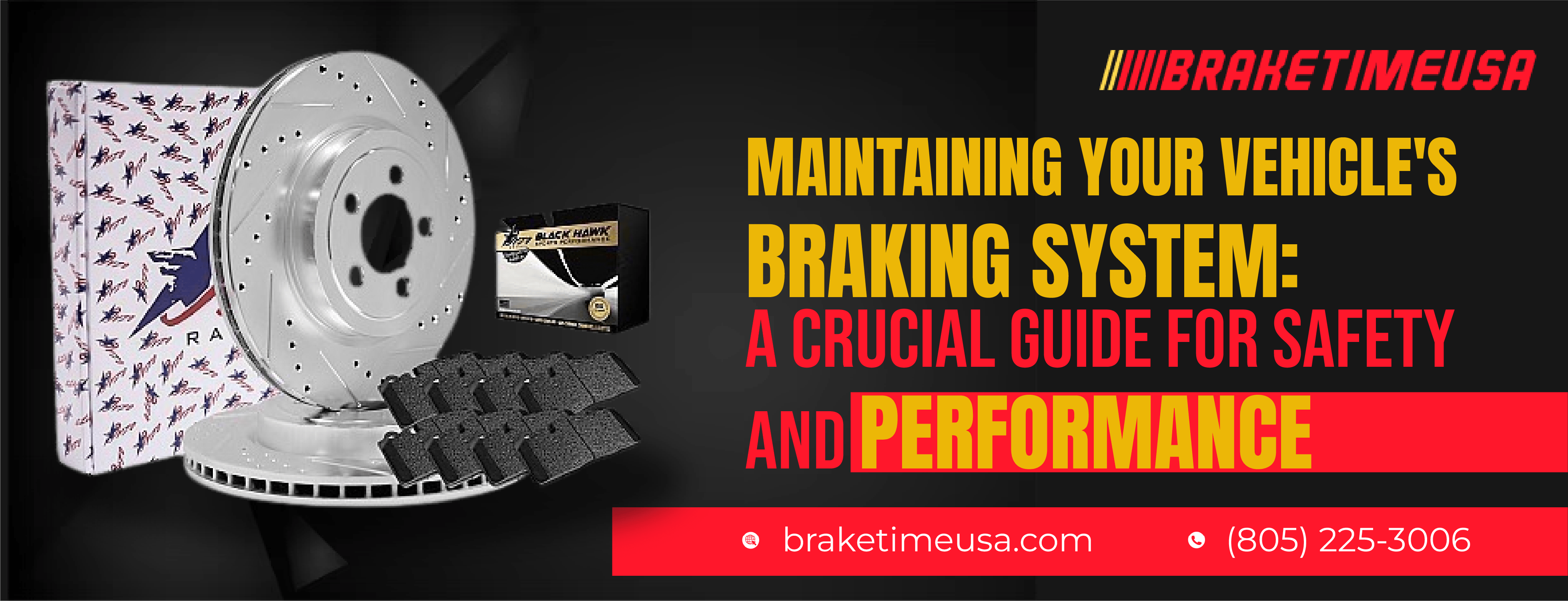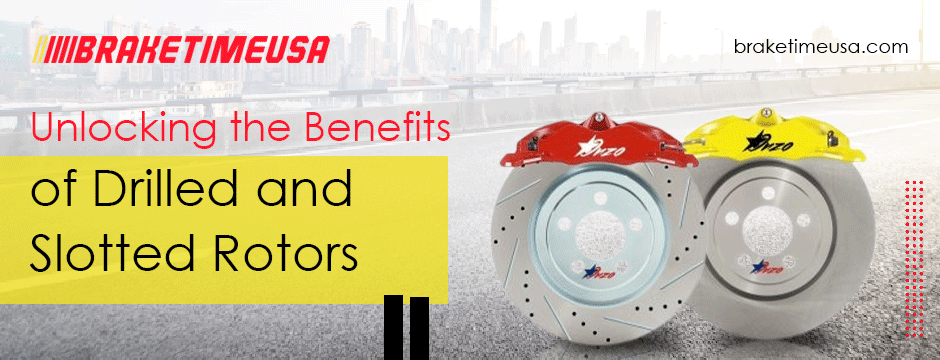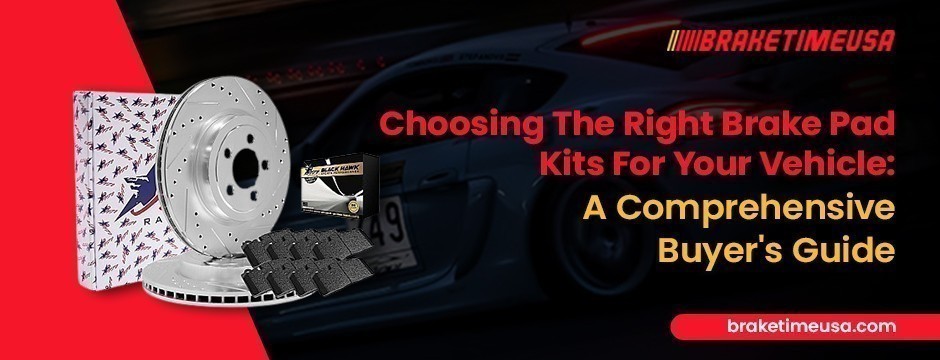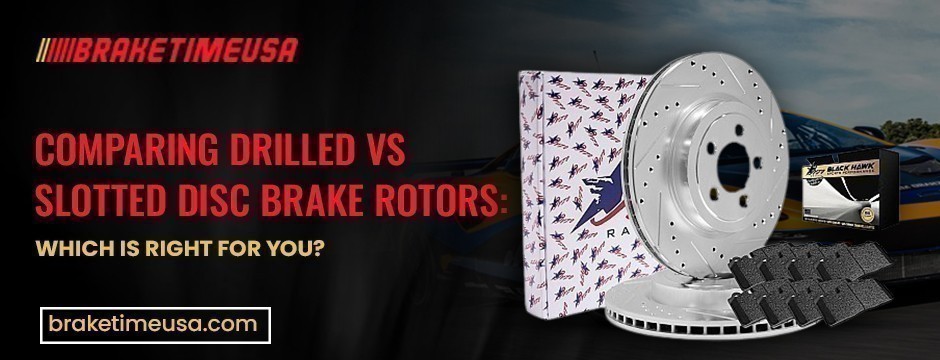Your cart is empty
Subtotal:$0.00
Ensuring the proper functioning of your vehicle's braking system is non-negotiable for both safety and performance. At the heart of this crucial system lie brake pads and rotors, playing integral roles in guaranteeing your car's ability to stop effectively. This comprehensive guide is designed to walk you through essential steps on how to check brake pads and rotors, offering valuable insights into maintenance practices that will keep your vehicle in optimal condition
Before delving into the inspection process, it's essential to grasp the fundamental roles that brake pads and rotors play in the intricate machinery of your vehicle's braking system. These components work in tandem to ensure the effectiveness and safety of your braking system.
Brake pads are integral components designed to create friction against the rotors, facilitating the generation of heat necessary to slow down or bring the vehicle to a complete stop. Think of them as the workhorses of the braking system, bearing the brunt of the kinetic energy and converting it into heat through the process of friction.
Importance of Regular Inspection: Over time, the continuous friction leads to wear and tear on brake pads. Regular inspection is crucial to ensure optimal performance and, more importantly, to guarantee safety during driving. Worn-out brake pads compromise the braking efficiency, potentially leading to longer stopping distances and increased risks on the road. Hence, periodic checks become imperative to identify signs of wear and address them promptly.
Rotors, also referred to as brake discs, are flat, round metal discs situated within the braking system. They serve as the surfaces against which the brake pads press, creating the friction necessary for the braking process. Rotors play a vital role in dissipating the heat generated during braking, ensuring that the system remains efficient and responsive.
Similarity to Brake Pads: Much like brake pads, rotors are subjected to wear and tear due to the intense friction they endure. Regular checks are indispensable to maintain safe driving conditions. If overlooked, issues with rotors, such as scoring, grooving, or warping, can compromise the braking system's effectiveness and pose potential safety hazards.
Importance of Regular Checks: Routine inspections of rotors are essential to identify any signs of damage or irregularities that may affect braking performance. Addressing these issues promptly can prevent further damage, ensuring that the braking system remains in optimal condition.
Performing regular checks on your brake pads and rotors is a crucial aspect of vehicle maintenance, ensuring early detection of issues and preventing potential safety hazards and costly repairs. Let's walk through a detailed step-by-step guide on how to check brake pads and rotors efficiently.
Gather Necessary Tools: Before commencing the inspection, it's essential to gather the necessary tools that will facilitate a smooth and efficient process. Equip yourself with a lug wrench, car jack, jack stands, flashlight, and a tire iron. Having these tools readily available ensures that you can navigate the inspection with ease, making the overall process more manageable.
Secure the Vehicle: Safety takes precedence in any maintenance task. Start by parking your car on a level surface to ensure stability. Engage the parking brake to prevent any unintended movement during the inspection. Prioritize personal safety by wearing appropriate safety gear, such as gloves and safety glasses. These precautions create a secure environment for you to carry out the inspection without unnecessary risks.
Locate the Brake Assembly: Utilize your vehicle's manual as a guide to pinpoint the location of the brake assembly. Typically situated behind the wheel, the brake assembly houses the critical components that will be subject to inspection. Familiarizing yourself with the assembly's location beforehand streamlines the process, saving time and effort during the actual inspection.
Remove the Wheel: With the necessary tools gathered and safety measures in place, proceed to the next step by loosening the lug nuts with the lug wrench. Employ the car jack to lift the vehicle off the ground, ensuring stability by securing it with jack stands. Once the vehicle is safely elevated, remove the lug nuts and the wheel. This step provides unobstructed access to the brake components, facilitating a thorough and comprehensive inspection.
5. Inspect Brake Pads: Locating the brake caliper is the initial step in evaluating the health of your brake pads. The caliper houses the brake pads and plays a crucial role in the braking process. Check the thickness of the brake pads during this inspection. If the thickness is worn down to 3mm or less, immediate replacement is warranted. Additionally, pay close attention to signs of uneven wear or scoring on the pads. These indicators may suggest underlying issues with the caliper that require prompt attention to ensure the continued effectiveness of the braking system.
6. Check Rotors: Direct your attention to the rotors, also known as brake discs. These flat, metal discs are integral to the braking mechanism. Conduct a thorough visual inspection for any signs of damage, including grooves, scoring, or warping. Identifying these issues early on is crucial as they can adversely affect braking performance. If the rotors exhibit severe damage, replacement is strongly recommended to maintain the safety and reliability of your vehicle's braking system.
7. Measure Rotor Thickness: Precision is key in determining the health of your rotors. Utilize a micrometer to measure the thickness of the rotors accurately. Compare this measurement to the manufacturer's specifications outlined in your vehicle's manual. If the rotor thickness falls below the minimum specified by the manufacturer, replacement becomes imperative for safe braking. This meticulous measurement ensures that your rotors meet the required standards for optimal performance.
8. Look for Warning Signs: Certain vehicles come equipped with wear indicators designed to alert drivers when brake pads are nearing the end of their lifespan. Listen for a distinctive squealing sound during braking. If you hear such sounds, consider it a clear warning sign to promptly check both the brake pads and rotors. Addressing this warning in a timely manner can prevent potential complications, ensuring the continued efficiency of your braking system.
9. Inspect Brake Fluid Level: While conducting the detailed examination of brake components, take a moment to inspect the brake fluid level in the master cylinder reservoir. Adequate brake fluid is indispensable for the proper functioning of the entire braking system. Maintaining the right fluid level ensures optimal hydraulic performance. Regularly checking and topping up the brake fluid contributes to the longevity and reliability of your braking system, underscoring its critical role in vehicle safety.
Beyond regular inspections, adopting a proactive approach to brake pads and rotors maintenance is crucial for extending the lifespan and ensuring optimal performance. Here are key tips to promote prolonged longevity and uphold the efficiency of your braking system:
1. Brake Fluid Flush: Schedule regular brake fluid flushes as recommended by your vehicle's manufacturer. Fresh brake fluid is essential for proper hydraulic function within the braking system. Over time, brake fluid can accumulate moisture and contaminants, compromising its effectiveness. Regular flushes help maintain the fluid's integrity, ensuring consistent and reliable brake performance.
2. Avoid Heavy Braking: Minimize abrupt and heavy braking, particularly when driving downhill. Excessive heat generated during intense braking can accelerate wear on both brake pads and rotors. By adopting a smoother and more gradual braking approach, you reduce the stress on these components, contributing to their prolonged lifespan. This not only enhances longevity but also promotes a safer driving experience.
3. Rotate Tires Regularly: Regular tire rotation is a fundamental practice that indirectly influences the wear pattern on brake components. Even tire wear promotes balanced performance, preventing uneven stress on specific brake pads or rotors. By rotating your tires at regular intervals, you ensure that the entire braking system experiences uniform wear, ultimately contributing to extended longevity.
4. Use Quality Brake Components: When the time comes to replace brake pads and rotors, opt for high-quality, manufacturer-recommended components. Investing in quality materials ensures better performance and durability. Quality brake pads and rotors are designed to withstand the rigors of braking forces, offering enhanced resilience against wear and tear. While they may come at a slightly higher cost, the long-term benefits in terms of performance and longevity outweigh the initial investment.
5. Follow Manufacturer Guidelines: Adhere to the maintenance schedule outlined in your vehicle's manual. Manufacturers provide specific guidelines for brake inspections and replacements based on mileage and driving conditions. Following these recommendations ensures that you stay ahead of potential issues, allowing for timely interventions and replacements. By aligning with manufacturer guidelines, you not only optimize the performance of your braking system but also prevent unnecessary wear and tear that may result from neglect.
Regularly checking your brake pads and rotors stands as a fundamental and non-negotiable aspect of responsible vehicle maintenance. Neglecting these critical components can lead to compromised safety and diminished overall vehicle performance. By conscientiously following the steps outlined in this guide and embracing recommended maintenance practices, you actively contribute to the enhanced safety and prolonged longevity of your vehicle's braking system.
Don't overlook the significance of regularly checking your brake pads and rotors. By diligently following the steps outlined in this guide and incorporating recommended maintenance practices, you actively participate in the safeguarding of your vehicle and its occupants. A well-maintained braking system not only prioritizes safety but also elevates your overall driving experience. Stay proactive, stay safe, and enjoy the road with the confidence that comes from having a reliable braking system at your command.
Want to find out more? Visit us at Brake Time!
 Mar 27, 2024Unlocking the Benefits of Drilled and Slotted Rotors
Mar 27, 2024Unlocking the Benefits of Drilled and Slotted Rotors Mar 22, 2024Choosing The Right Brake Pad Kits For Your Vehicle: A Comprehensive Buyer's Guide
Mar 22, 2024Choosing The Right Brake Pad Kits For Your Vehicle: A Comprehensive Buyer's Guide Mar 18, 2024Exploring Different Types of Rear Brake Rotors
Mar 18, 2024Exploring Different Types of Rear Brake Rotors Mar 6, 2024Comparing Drilled vs. Slotted Disc Brake Rotors: Which Is Right for You?
Mar 6, 2024Comparing Drilled vs. Slotted Disc Brake Rotors: Which Is Right for You?
 Feb 5, 2024Comprehensive Guide on How To Check Brake Pads and Rotors for Optimal Maintenance
Feb 5, 2024Comprehensive Guide on How To Check Brake Pads and Rotors for Optimal Maintenance© 2023 - 2024 Braketimeusa. All rights reserved.
